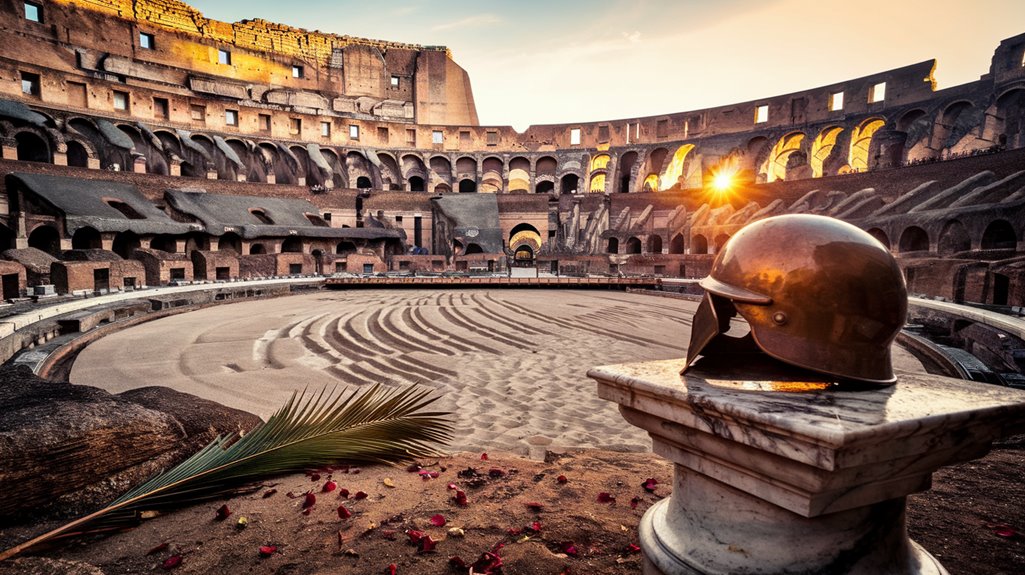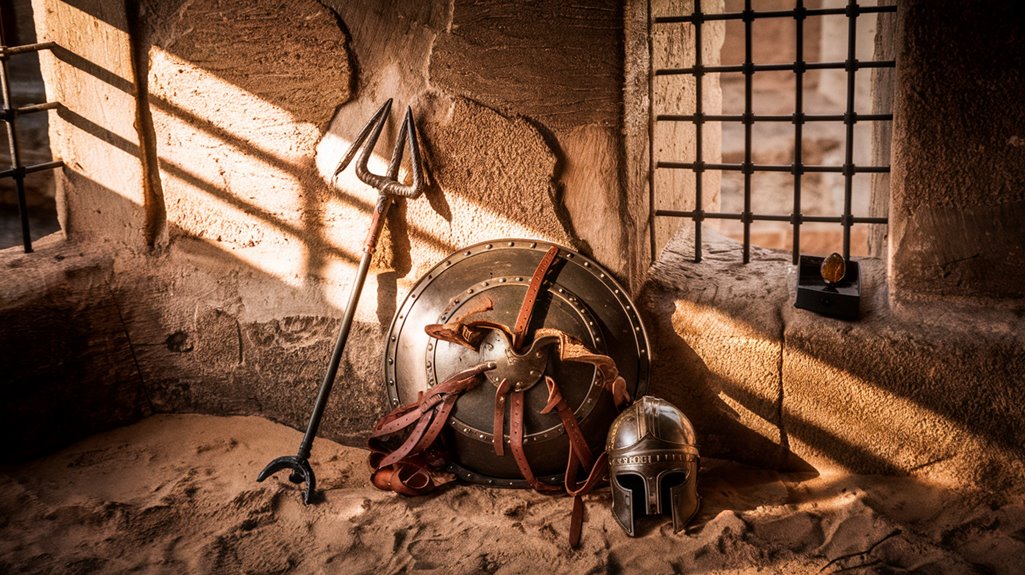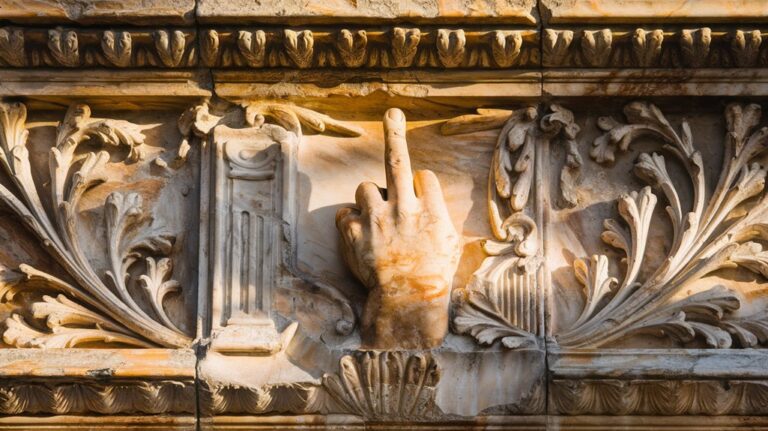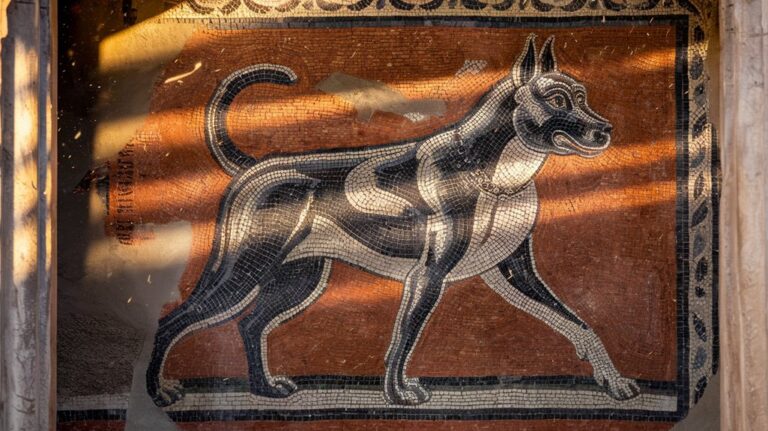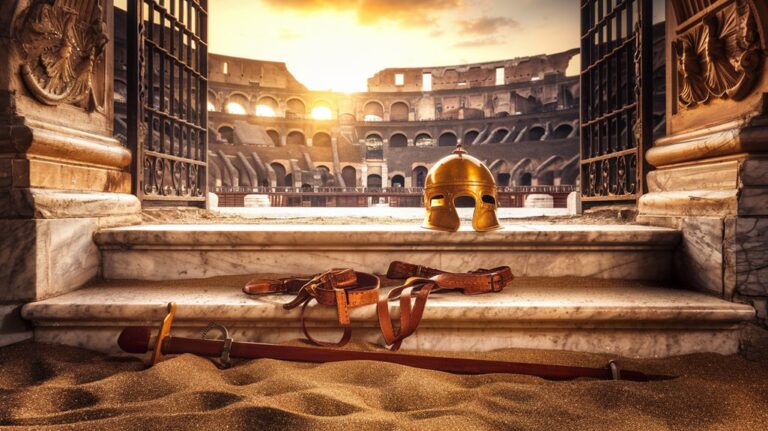Gladiators: The Celebrities of Ancient Rome
You might think gladiatorial combat was just mindless bloodsport, but you'd be overlooking one of history's most complex social phenomena. These warriors weren't merely slaves thrust into battle; they were highly trained athletes who captured the Roman imagination through skill, strategy, and showmanship. As both entertainers and symbols of imperial might, gladiators achieved a celebrity status that would rival today's biggest stars. Their remarkable journey from the ludus to the arena reveals a fascinating world of glory, danger, and transformation.
The Birth of Rome's Greatest Entertainment
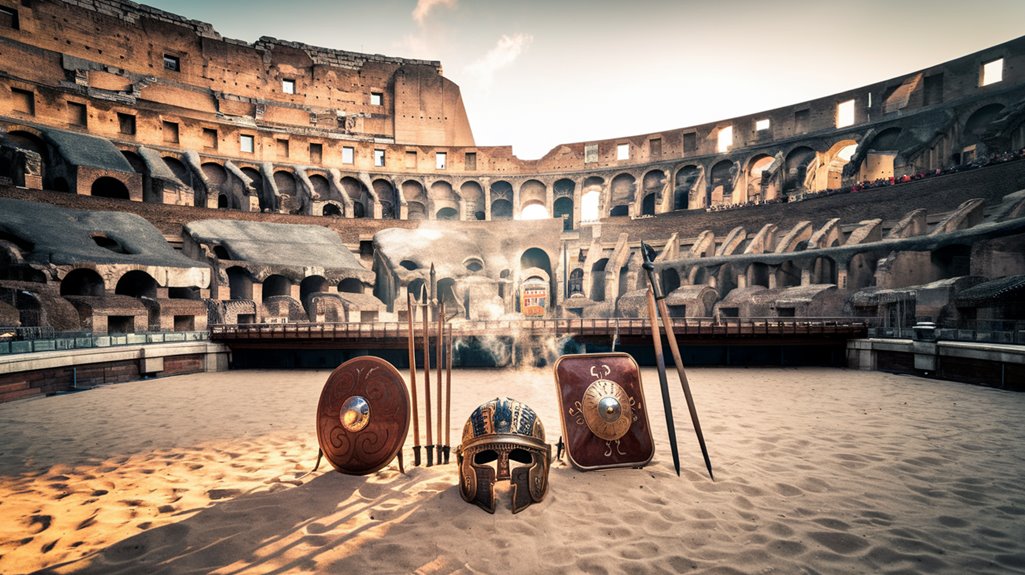
While ancient Roman entertainment took many forms, gladiatorial combat emerged as the empire's most iconic spectacle, tracing its roots to funeral rites during the 3rd century BC. The earliest evidence of these battles comes from the Punic Wars era, though historical accounts suggest gladiatorial origins may date back even further to 310 BC among the Campanians.
You'll find that the cultural significance of these games was deeply rooted in both Etruscan and Roman traditions. Most participants were slaves and prisoners forced to fight in these deadly spectacles.
When Decimus Junius Brutus Scaeva held the first Roman gladiator games in 264 BC to honor his deceased father, he established a practice that would transform from a solemn funeral ritual into grand public entertainment.
As the games evolved, they became intrinsically linked to military victory celebrations and religious ceremonies, reflecting Rome's growing power and cultural identity. By 183 BC, these spectacles had grown remarkably in scale, with some funeral games featuring 120 gladiatorial combatants.
Training for Glory: Life in the Ludus
Before a gladiator could step into the arena, they endured grueling training at specialized schools called ludi, where every aspect of combat and conditioning was methodically developed.
You'd find these fighters following a strict "tetrad" system, a four-day training cycle inspired by Ancient Greek Olympians.
Training techniques included sparring with weighted wooden weapons twice as heavy as real ones, practicing with the palus for sword movements, and mastering various combat styles under experienced doctores. Ancient warriors used stones and logs as part of their resistance training regimen to build raw strength. Their intense training with weighted weapons was so extreme that it often resulted in bone deformation.
Physical conditioning focused on building strength and agility through running, jumping, and obstacle courses.
You'd also find specialized equipment like suspended dummies and swinging bags to improve coordination.
Life in the ludus wasn't just about training – you'd have access to bath complexes for recovery, and you'd learn the importance of dying gracefully if defeat came.
Warriors of the Arena: Famous Fighting Styles
As skilled warriors stepped into the arena, they brought distinct fighting styles that would define their careers and capture the crowd's imagination.
You'd find the agile retiarius wielding his net and trident against the heavily armored secutor, while the curved-sword-carrying thraex faced off against the shield-bearing murmillo. These gladiator pairings weren't random but carefully orchestrated for maximum entertainment.
The arena showcased diverse fighting techniques, from the horseback combat of the equites to the unique spectacle of the andabata fighting blind. The brutal cestus fighters engaged in deadly bare-knuckle combat with spiked leather wrappings on their hands. The fighters trained at ludi gladiatorii where they practiced with weighted wooden weapons to build strength and skill.
Some gladiators, like the provocator, relied on heavy armor and sword skills, while others, such as the laquearius, mastered the art of the lasso.
Each style required specialized training and equipment, creating a deadly dance that kept Roman audiences on the edge of their seats.
Blood and Honor: the Games That Captivated Rome
From their humble beginnings as funeral rites in 264 BC, gladiatorial games evolved into Rome's most enchanting form of entertainment.
The Coliseum of Rome housed up to 50,000 spectators who gathered to witness the spectacles.
You'd find these public spectacles drawing crowds from every social class, as wealthy patrons and emperors sponsored elaborate shows to display their power and wealth.
Most gladiators followed a strict vegetarian diet focused on barley, beans, and wheat to maintain their strength and endurance.
The games carried deep gladiatorial symbolism, from the ritualistic shared meals among fighters to the theatrical execution ceremonies.
When a gladiator fell, attendants dressed as the gods Charon and Mercury would guarantee their death through specific rituals – a sword to the neck, followed by a mace blow to the head and a hot iron test for signs of life.
Despite their brutal nature, these games offered slaves and prisoners a chance at wealth and freedom, though most faced short life expectancies in the arena.
From Slave to Star: The Path to Freedom and Fame
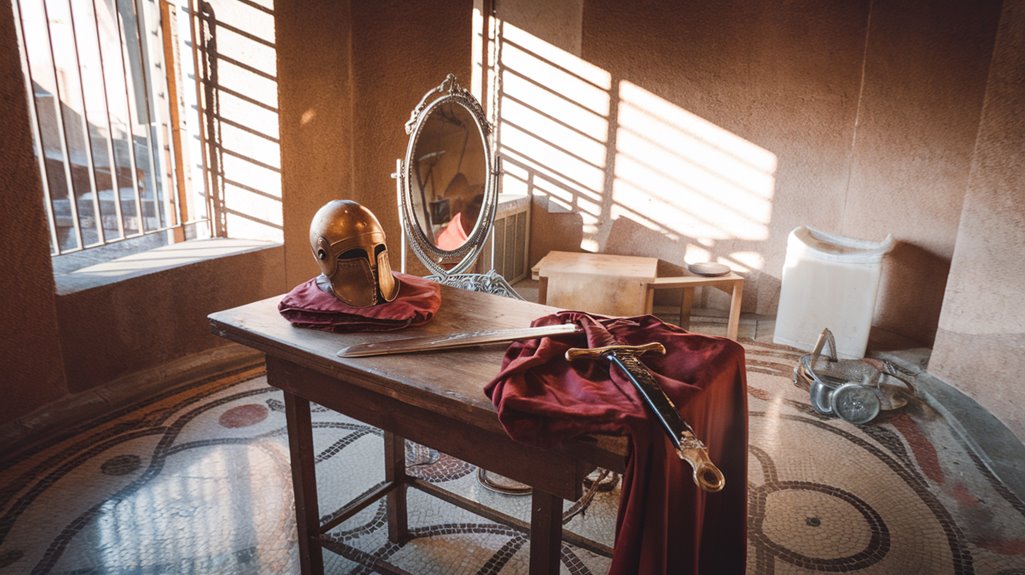
The journey to gladiatorial stardom began in the brutal confines of the ludus, where slaves, prisoners of war, and even free volunteers underwent rigorous training under their lanista.
You'd find yourself bound by sacred gladiator contracts and living a strictly regimented life, surviving on a basic diet of barley, beans, and dried fruit while mastering combat techniques with wooden weapons.
If you proved skilled enough, you could climb the ranks to primus palus, earning fame, money, and the crowd's adoration. Owners would often rent out gladiators to wealthy patrons seeking protection or entertainment.
Yet these fame consequences came at a steep price – you'd remain socially outcast despite your celebrity status. Once injured in combat, a referee's decision would determine if you could continue fighting.
Your ultimate reward might be the rudis, granting freedom from the arena.
Some successful fighters even launched their own businesses or found work in security, transforming their gladiatorial prowess into a respectable living.

